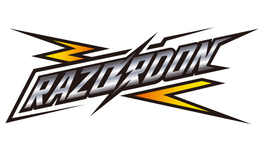FAA Overview of RC Helicopter Regulations

-
The Weight Threshold
- Under 0.55 pounds (250 grams): No registration required. These are typically small, indoor-friendly models, but giant RC helicopters far exceed this limit. Additionally, these lightweight models are exempt from Remote ID requirements, even for outdoor flights.
- 0.55 pounds to 55 pounds (250 grams to about 25 kg): Mandatory registration for all uses. Most giant RC helicopters, like those from brands such as Align or SAB with turbine power, weigh 10-40 pounds and fall here—making registration a must for legal flights.
- Over 55 pounds: Special rules apply, including potential airworthiness certification. These ultra-large models are treated more like experimental aircraft and may need FAA waivers or inspections.
-
The Purpose of Flight
- Recreational Flying (Hobby): If you fly purely for fun, you must register any giant RC helicopter over 0.55 lbs. The process is simple and can be completed online through the FAA's FAADroneZone portal.
- Commercial Use (Part 107): Using your heavy-lift RC helicopter for any form of compensation (e.g., aerial photography for pay, inspections, real estate videos) falls under the FAA's Part 107 rules. Registration is mandatory for aircraft over 0.55 lbs, and you, the pilot, must obtain a Remote Pilot Certificate by passing an aeronautical knowledge test.

-
Registration Requirements
Step-by-Step FAA Registration Process
- Visit the FAA DroneZone Website: Go to FAADroneZone.faa.gov and create an account with your basic contact info.
- Submit Details and Complete TRUST: Provide your contact details and helicopter specifications. Complete the FAA TRUST test (free, ~20 minutes).
- Pay the Fee: A one-time $5 payment via credit card registers you for three years, covering all your UAS, including multiple giant RC helicopters.
- Get and Label Your Number: Receive a unique FAA registration number and affix it externally on your helicopter (e.g., with a sticker or engraving).
- Renew Every Three Years: Keep it current with another $5 fee—simple renewal through DroneZone.
Flight Rules and Restrictions After Registration
- Altitude Limit: Fly at or below 400 feet above ground level (AGL) in uncontrolled airspace.
- Airspace Awareness: Never fly near airports, in restricted airspace, or over emergency response efforts. Always use the FAA's B4UFLY app or other LAANC-enabled services to check for airspace authorizations.
- Visual Line-of-Sight: You must always keep your giant RC helicopter within your unaided visual sightline (without binoculars).
- Time and Conditions: Fly only during daylight or civil twilight (30 minutes before official sunrise to 30 minutes after official sunset) with appropriate anti-collision lighting.
- Avoid People: Do not fly directly over groups of people, moving vehicles, or stadiums full of people.

The Significant Risks of Not Registering
- Fines: Up to $27,000 per violation of civil penalties, or even criminal charges in severe cases.
- Insurance Issues: If you cause an accident with an unregistered aircraft, your personal liability insurance or membership-based insurance (like from the AMA) may be voided, leaving you financially responsible for all damages.
- Regulatory Scrutiny: Violations draw negative attention to the entire RC community and can lead to stricter regulations for everyone.
Conclusion
FAQ: Common Questions About Giant RC Helicopter Registration









